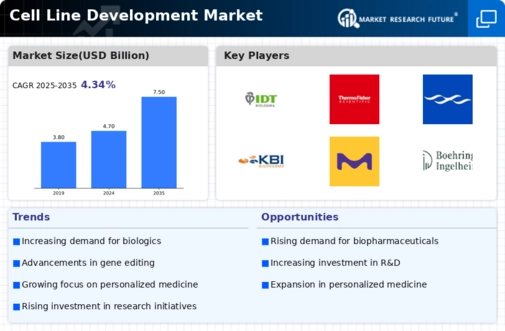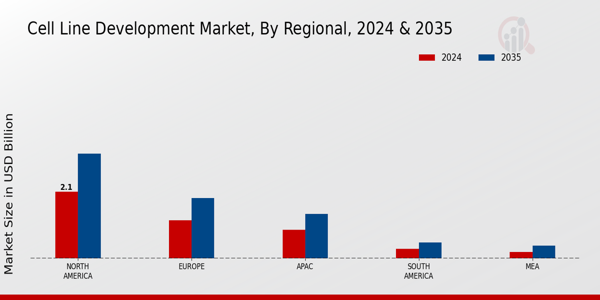Market Share
Cell Line Development Market Share Analysis
In the bustling landscape of the Cell Line Development Market, gaining and maintaining a competitive edge hinges significantly on strategic market positioning. Market share positioning strategies are pivotal in carving out a niche and securing a robust foothold amidst stiff competition. One of the fundamental approaches in this realm is differentiation. Companies strive to set themselves apart by offering unique features, specialized services, or superior quality products. By emphasizing these distinctive aspects, they attract a segment of customers seeking specific benefits, thereby capturing a portion of the market share. Moreover, companies often leverage their technological prowess to innovate and introduce cutting-edge solutions that address prevailing challenges or unmet needs within the industry. This proactive stance not only enhances their reputation but also bolsters their market presence, enticing customers seeking advanced and efficient methodologies.
Another crucial facet of market share positioning strategies is segmentation. Recognizing the diverse needs and preferences of customers, companies tailor their offerings to cater to distinct market segments effectively. By honing in on specific demographics, such as research institutions, pharmaceutical companies, or biotechnology firms, they can customize their products or services to align with the requirements of each segment. This targeted approach enables companies to penetrate various niches comprehensively, optimizing their market share across different customer bases. Additionally, companies often employ pricing strategies to bolster their market position. By strategically pricing their products or services, they can appeal to different customer segments based on their budget constraints or perceived value. Whether through competitive pricing, premium pricing for specialized solutions, or penetration pricing to gain initial traction, companies navigate the pricing landscape to maximize their market share while ensuring profitability.
Furthermore, strategic partnerships and collaborations play a pivotal role in amplifying market share positioning efforts. By forging alliances with complementary businesses or research institutions, companies can leverage shared resources, expertise, and networks to expand their reach and influence within the market. Collaborative ventures enable companies to access new markets, tap into untapped opportunities, and accelerate innovation through synergistic efforts. Whether through licensing agreements, joint ventures, or research partnerships, these collaborative endeavors amplify the competitive advantage of participating entities, thereby fortifying their market position and driving sustained growth.
In addition to proactive strategies, reactive measures also come into play in market share positioning. Monitoring competitors' movements, market trends, and customer feedback enables companies to adapt swiftly and fine-tune their positioning strategies accordingly. Whether through product enhancements, service improvements, or targeted marketing campaigns, companies continuously evolve to stay ahead of the curve and maintain their competitive edge. Moreover, fostering a customer-centric approach is paramount in fortifying market share positioning. By prioritizing customer satisfaction, addressing grievances promptly, and soliciting feedback, companies cultivate brand loyalty and advocacy, fostering long-term relationships that translate into sustainable market share gains.













Leave a Comment